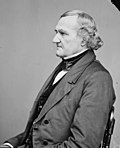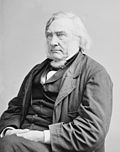Scott v. Sanford
Scott v. Sandford , 60 U.S. (19 How.) 393 (1857), is the most notorious and condemned decision in the history of the U.S. Supreme Court. In it, the Court held that the US Constitution was not meant to include American citizenship for black people, regardless of whether they were enslaved or free, and so the rights and privileges that the Constitution confers upon American citizens could not apply to them. Although Chief Justice Roger Taney and several of the other justices hoped that the decision would permanently settle the slavery controversy, which was increasingly dividing the American public, the decision's effect was the opposite. Taney's majority opinion suited the slaveholding states, but was intensely decried in the other states. The decision inflamed the national debate over slavery and deepened the divide that led ultimately to the Civil War. In 1865, after the Union won the Civil War, the Dred Scott ruling was voided by the Thirteenth Amendment to the US Constitution, which abolished slavery except as punishment for a crime, and the Fourteenth Amendment, which guaranteed citizenship for "all persons born or naturalized in the United States, and subject to the jurisdiction thereof". The Supreme Court's decision has been continuously denounced ever since, both for its overt racism and its role in the near destruction of the United States four years later. [3] [4] Bernard Schwartz said that it "stands first in any list of the worst Supreme Court decisions—Chief Justice Hughes called it the Court's greatest self-inflicted wound." [5] Junius P. Rodriguez wrote that it is "universally condemned as the U.S. Supreme Court's worst decision". [6] Historian David Thomas Konig agrees that it was "unquestionably, our court's worst decision ever." [7]














